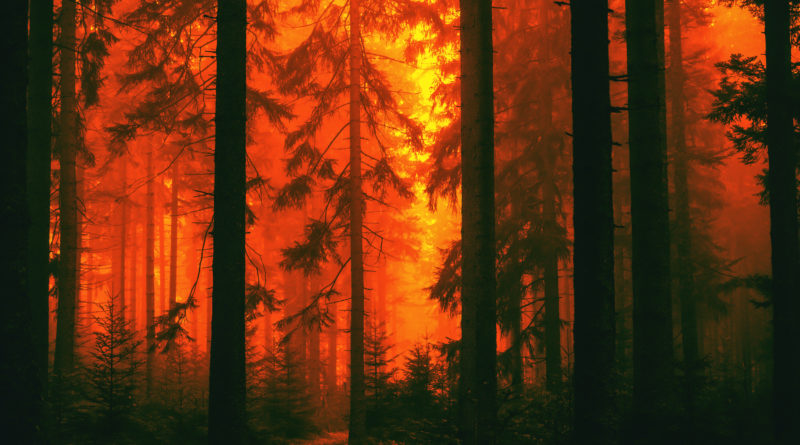Why Are There So Many West Coast Wildfires?
6,275 total views, 1 views today
This year has brought a record-breaking hurricane season, and that’s not the only climate concern of 2020. Now, the West Coast is experiencing an unusually severe wildfire season. California, Oregon, and Washington have been affected by the fires and about three dozen people have died. Millions of acres have burned, and thousands of homes and buildings have been destroyed. Hazardous air quality has turned skies red, and the wildfires continue to spread.
California wildfires
In recent years, record-breaking wildfires have occured more often than ever before. Out of the 10 most massive fires in California history, eight fires have burned in the past decade. 2020 is no exception: A record 3.2 million acres have burned in California this year, and there are 25 major wildfires.
On September 9, the massive August Complex Fire became the largest wildfire in California. Thousands of people have since been evacuated from Mendocino, Humboldt, Lake, Glenn, and Trinity Counties. The Bobcat Fire has burned almost 42,000 acres, and firefighters have only contained it by three percent. This fire recently approached a 500-foot distance from the historic Mount Wilson Observatory in the San Gabriel Mountains.
Additionally, California has been experiencing more droughts, and summer heat combined with lower precipitation levels makes rural parts of California more susceptible to wildfires. With vegetation dried out from the heat and drought, the current wildfires have erupted in fashions previously unseen.
Oregon wildfires
As more than 30 fires continue to burn in Oregon, approximately 40,000 Oregonians have left their homes, and thousands more are in the midst of evacuation orders.
According to the Oregon State Fire Marshal’s office, the fire just outside Medford, Oregon, is now 100 percent contained. The Almeda Fire torched 3,200 acres and destroyed two small towns in southern Oregon, which have moved into the stabilization phase. Search and rescue teams continue to assess the damage. In Jackson County, officials have reduced the number of Level 3 evacuation areas, but approximately 2,350 residential structures have been destroyed.
Washington wildfires
In Northern Washington, the Cold Springs Fire started on September 6 and has burned approximately 200,000 acres. It is almost two-thirds contained. The nearby Pearl Hill Fire, which started a day later, has consumed about 250,000 acres and is now mostly contained.
Washington Governor Jay Inslee said Sunday that Washington looks “apocalyptic” with smoky red skies from wildfires that he blamed on climate change. While speaking during a televised briefing in Sacramento on Monday, President Donald Trump instead blamed the wildfires on poor forest management and exploding trees. Inslee strongly disagreed with the president’s explanation and expressed frustration at President Trump and his administration’s reluctance to tackle climate change.
Why are there so many West Coast wildfires?
The effects of human-caused climate change have led to longer and more dangerous fire seasons. Global warming is melting mountain snowpacks, which causes drier and hotter summers that lead to wildfires. 80 percent of California, 95 percent of Oregon, and all of Colorado, Arizona, New Mexico, and Utah are currently experiencing droughts.
Hundreds of millions of trees in West Coast forests have died due to severe droughts, and these dead trees are just fuel for more fires. Additionally, higher temperatures dry out rangeland soils, lightning storms have ignited multiple fires, and it’s challenging to stop multiple wildfires early. Unfortunately, West Coast residents may have to learn how to stand up to this challenge, as climate change may portend similarly massive wildfires for the foreseeable future.

